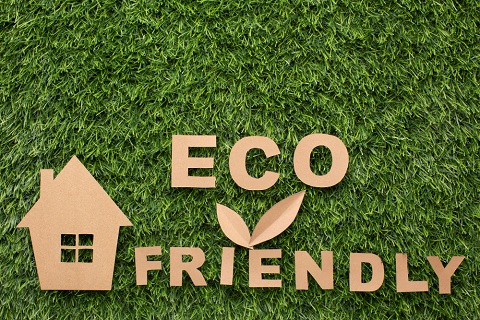Green living, also known as sustainable living, refers to adopting practices and lifestyles that minimize environmental impact while promoting personal well-being. In this article, we explore the numerous benefits of green living, from its positive environmental impact to its contributions to personal wellness.
Environmental Benefits of Green Living
Green living significantly reduces our carbon footprint by minimizing energy consumption and reliance on fossil fuels. This leads to lower greenhouse gas emissions, mitigating climate change effects. Additionally, sustainable practices such as recycling and composting conserve natural resources like water and land, preserving ecosystems for future generations with the increase of greenery, all types of enviornmental pollution such as air pollution, water pollution, soil pollution will be reduced and the amount of toxic chemical gases in the air will also be reduced.
Health and Wellness Benefits of Green Living
One of the direct benefits of green living is improved air quality. By reducing pollution and emissions, green living contributes to cleaner air, which has positive effects on respiratory health. Moreover, minimizing exposure to toxic chemicals found in conventional products promotes better overall health and well-being. Studies also show that living in green spaces and connecting with nature can reduce stress and enhance mental health. As pollutin decrease, the supply of oxygen will increasing in the air and maintain a balance with the carbondioxide so that all the animals in the society along with the people will have a fresh life.
Economic Advantages of Green Living
Embracing green practices can lead to substantial cost savings. Efficient energy use, such as installing solar panels or using energy-efficient appliances, reduces utility bills. Furthermore, the growth of green industries creates job opportunities in sectors like renewable energy, sustainable agriculture, and eco-friendly manufacturing. Another example can be mention that if we eliminated plastic or thermocol plates and use pellets made by old traditional shala tree leaf (Shorea robusta) or different large-sized forest leaves, it will save cost and also be healthy with environmental friendly.
Social Impact of Green Living
Green living fosters community engagement and collaboration. By participating in eco-friendly initiatives such as community gardens or local environmental projects, individuals contribute to a sense of belonging and collective responsibility. Promoting sustainable practices within communities also creates a ripple effect, inspiring others to adopt greener lifestyles. Incorporating details about the benefits of greening in the curriculum will help all the students to know about it which is very good sign for the future generations.
Practical Tips for Embracing Green Living

To embrace green living, start by assessing energy consumption and making adjustments for efficiency. Use renewable energy sources whenever possible, and invest in energy-saving appliances and lighting. Reduce waste by practicing recycling, composting organic materials, and opting for reusable products over single-use items. Choose eco-friendly transportation options like biking, walking, or carpooling to reduce emissions.
Why green is important in our life?
Environmental Preservation:
The color green is often associated with nature, representing lush forests, healthy plants, and thriving ecosystems. It reminds us of the vital role nature plays in sustaining life on Earth. Green spaces, such as forests, parks, and gardens, not only provide aesthetic beauty but also serve essential ecological functions. They help purify the air we breathe, regulate the climate, and support biodiversity by providing habitats for diverse plant and animal species.
Health and Well-being:

Exposure to green environments has been linked to numerous health benefits. Studies show that spending time in nature, whether it’s taking a walk in a park or enjoying a garden view, can reduce stress, anxiety, and depression. The calming effect of green surroundings can lower blood pressure, improve mood, and enhance overall mental well-being. Additionally, access to green spaces encourages physical activity, leading to a healthier lifestyle.
Sustainable Living:
The concept of “going green” extends beyond environmental conservation to include sustainable practices that reduce waste, conserve resources, and minimize pollution. Green living involves adopting eco-friendly habits such as recycling, using renewable energy sources, reducing water consumption, and choosing sustainable products. These actions contribute to preserving natural resources for future generations and mitigating the negative impacts of climate change.
Connection to Nature:
Green symbolizes our connection to the natural world. It reminds us of our interdependence with the environment and the importance of respecting and protecting it. Being surrounded by greenery, whether it’s in urban parks or rural landscapes, fosters a sense of connection, peace, and appreciation for the beauty and diversity of life on Earth.
FAQs related to green living and the green movement
Green living lifestyle refers to adopting practices and making choices that minimize negative impacts on the environment. It involves reducing energy consumption, conserving resources, recycling, using eco-friendly products, and supporting sustainable practices such as renewable energy and organic farming.
The green movement promotes environmental sustainability and advocates for policies and practices that prioritize conservation and eco-friendly solutions. Some benefits of the green movement include reduced pollution, improved air and water quality, conservation of natural resources, promotion of renewable energy sources, and raising awareness about environmental issues.
Reduced carbon emissions: Green energy sources such as solar, wind, and hydroelectric power produce minimal or no greenhouse gas emissions, helping to mitigate climate change.
Renewable and sustainable: Green energy sources are renewable and abundant, unlike finite fossil fuels, ensuring long-term energy security.
Cost savings: Investing in green energy technologies can lead to lower energy costs over time, as renewable sources become more efficient and affordable.
The term “father of the green economy” is often attributed to Ernst Friedrich “Fritz” Schumacher, a renowned economist and author of the book “Small is Beautiful: A Study of Economics As If People Mattered.” Schumacher’s work emphasized the importance of sustainable development, appropriate technology, and environmental conservation in economic practices.
The main principle of a green economy is to achieve sustainable development by balancing economic growth with environmental protection and social equity. It promotes resource efficiency, renewable energy adoption, waste reduction, conservation of biodiversity, and fair distribution of benefits to ensure a harmonious and resilient society.
Conclusion
Green living offers a myriad of benefits, ranging from environmental sustainability to personal health and economic advantages. By incorporating sustainable practices into daily life, individuals contribute to a healthier planet and improve their own well-being.



